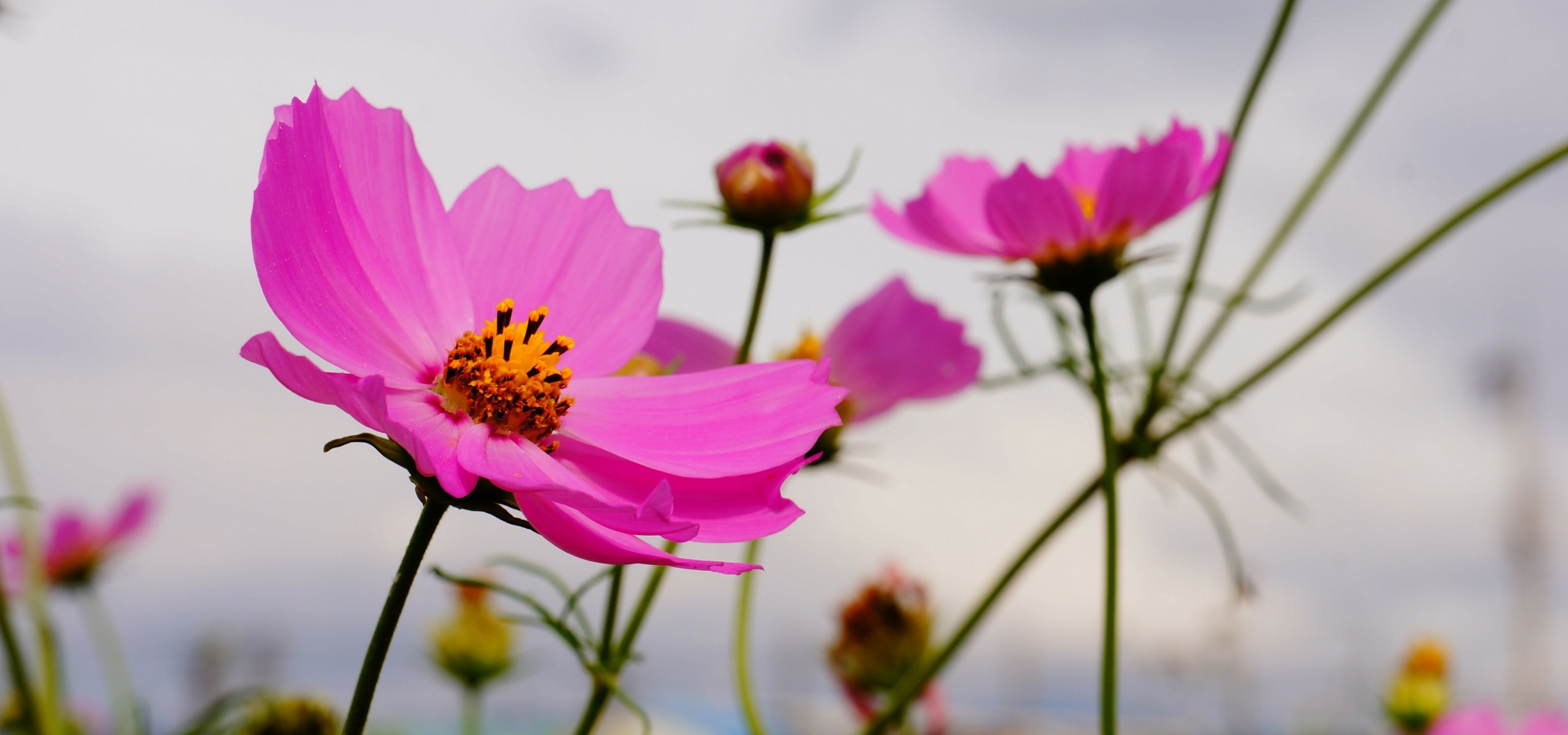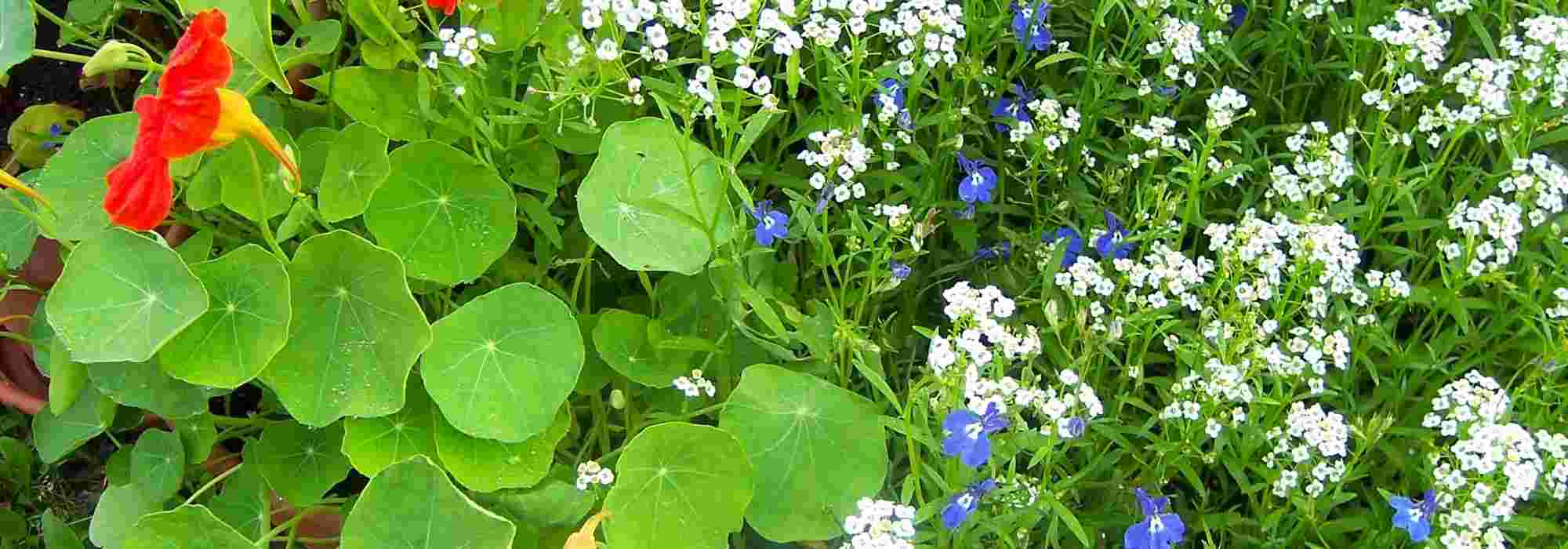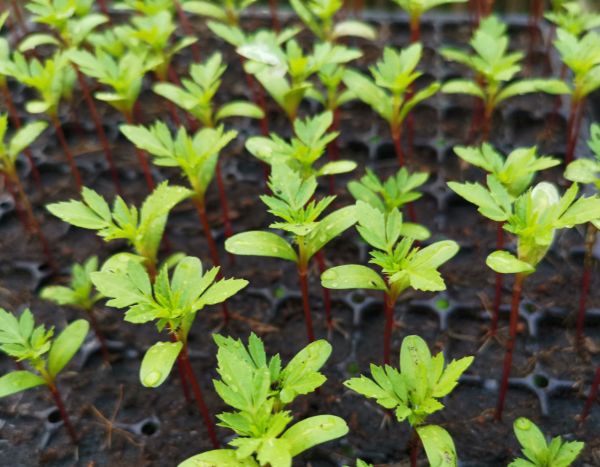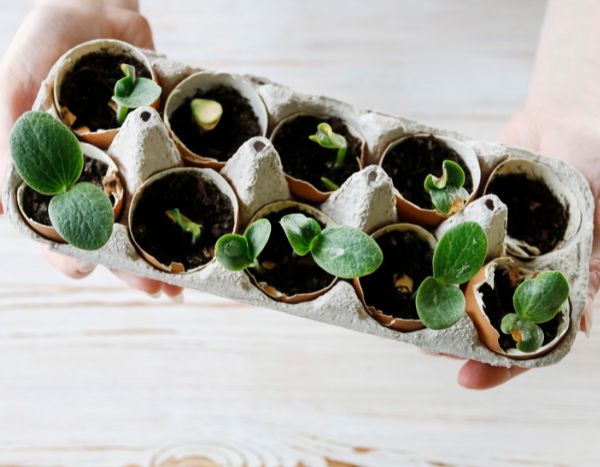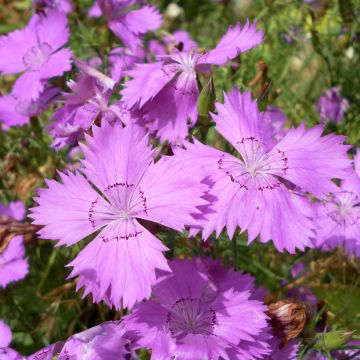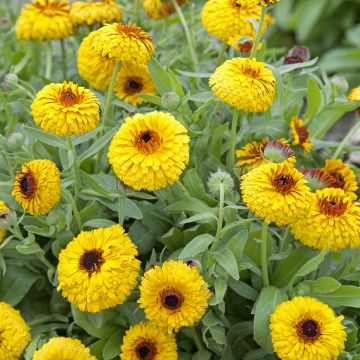

Xeranthemum annuum Superbissimum Album - Everlasting flower
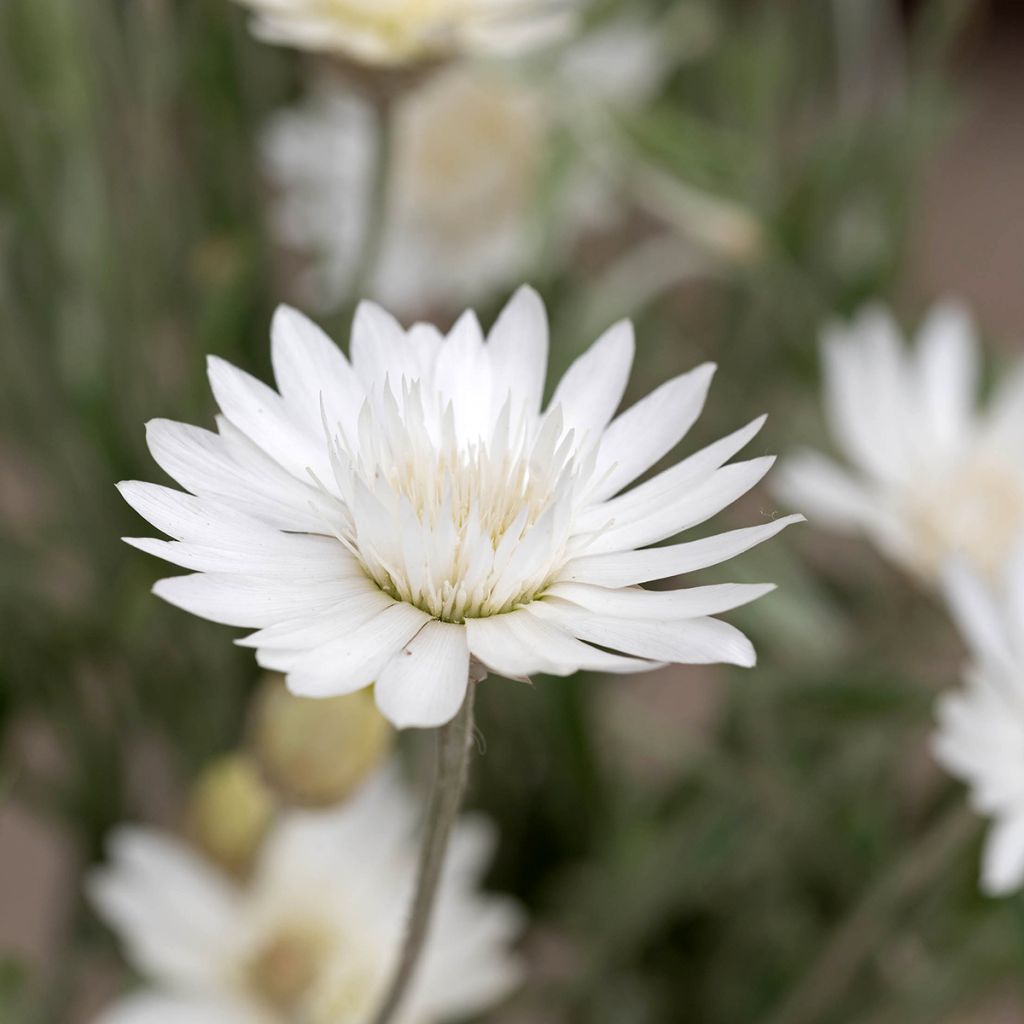

Xeranthemum annuum Superbissimum Album - Everlasting flower
Xeranthemum annuum Superbissimum Album - Everlasting flower
Xeranthemum annuum Superbissimum Album
Annual everlasting flower
Special offer!
Receive a €20 voucher for any order over €90 (excluding delivery costs, credit notes, and plastic-free options)!
1- Add your favorite plants to your cart.
2- Once you have reached €90, confirm your order (you can even choose the delivery date!).
3- As soon as your order is shipped, you will receive an email containing your voucher code, valid for 3 months (90 days).
Your voucher is unique and can only be used once, for any order with a minimum value of €20, excluding delivery costs.
Can be combined with other current offers, non-divisible and non-refundable.
Home or relay delivery (depending on size and destination)
Schedule delivery date,
and select date in basket
This plant carries a 6 months recovery warranty
More information
We guarantee the quality of our plants for a full growing cycle, and will replace at our expense any plant that fails to recover under normal climatic and planting conditions.
Would this plant suit my garden?
Set up your Plantfit profile →
Description
The Annual Immortelle or Xeranthemum annuum 'Superbissimum Album' offers double white flowers with a silky paper-like texture, ideal for dried flower arrangements. It is an annual plant that is very easy to grow and self-seeds. Sowing takes place in spring, under cover, for a flowering period from July to October in the wilder areas of the garden or in pots.
The Annual Immortelle 'Superbissimum Album' belongs to the large aster family. Originating from the steppe regions of Eastern Europe and Western Asia, the botanical species Xeranthemum annuum has become naturalised in many dry meadows. It is often found on poor, well-drained, sunny ground such as rocky slopes or shallow chalky soil.
The 'Superbissimum Album' is its pure white form. The plant has an elongated, lanceolate, silvery-grey, silky foliage covered with a fine down. Within a few weeks, it forms, a clump about 60 cm high. Borne in elegant heads of 4 cm in diameter, its flowers are filled with white, fine, papyraceous bracts that mimic the appearance of petals. Unlike classic flowers, it is these pearly bracts that give the inflorescences all their charm and ensure their excellent keeping qualities once dried. Flowering begins 100 to 110 days after sowing, spreading from July to September depending on the sowing date. It attracts many pollinators, particularly butterflies.
Undemanding, the Annual Immortelle 'Superbissimum Album' is ideal for embellishing rockeries, planters, small beds, or borders exposed to the sun. It integrates effortlessly into natural areas alongside cosmos, nigella, poppies or rose campion. It is also an excellent companion for easy-going perennials or small bushes.
The heads of Xeranthemum annuum are prized for making dried flower arrangements. To preserve their beauty, they are harvested before they are fully open, when the bracts are well-formed. The stems should be hung upside down in a dry, dark, and well-ventilated place. Once dried, the withered leaves are removed to keep only the flower heads.
Report an error about the product description
Xeranthemum annuum Superbissimum Album - Everlasting flower in pictures


Flowering
Foliage
Plant habit
Botanical data
Xeranthemum
annuum
Superbissimum Album
Asteraceae
Annual everlasting flower
Centaurea dubia, Xeranthemum inodorum, Xeranthemum ornatum
Cultivar or hybrid
Planting and care
The annual Superbissimum Album everlasting flower is sown in spring, using 2 methods:
1-Sow seeds in February-March-April under a cold frame, in situ, in garden soil mixed with compost. The seedlings will germinate and should be transplanted into individual pots as soon as possible and planted out in May, maintaining a spacing of at least 35 cm. Flowering will begin in July.
2-Seeds can also be sown directly after the last frost=, in March, April or May depending on your region's climate. Thinning is necessary to obtain robust plants. With this technique, flowering will begin in August.
The annual everlasting flower prefers warm, sunny or partially shaded positions. It develops in moderately rich, well-drainqw soil. It tolerates drought but develops better in cool soil, or with regular watering, possibly supplemented with flower fertiliser once or twice during flowering to obtain larger heads. The annual everlasting flower shows rapid growth and flowers from summer until October. It withstands light frosts, of the order of -1 to -2°C.
Sowing period
Intended location
Planting & care advice
This item has not been reviewed yet - be the first to leave a review about it.
Similar products
Haven't found what you were looking for?
Hardiness is the lowest winter temperature a plant can endure without suffering serious damage or even dying. However, hardiness is affected by location (a sheltered area, such as a patio), protection (winter cover) and soil type (hardiness is improved by well-drained soil).

Photo Sharing Terms & Conditions
In order to encourage gardeners to interact and share their experiences, Promesse de fleurs offers various media enabling content to be uploaded onto its Site - in particular via the ‘Photo sharing’ module.
The User agrees to refrain from:
- Posting any content that is illegal, prejudicial, insulting, racist, inciteful to hatred, revisionist, contrary to public decency, that infringes on privacy or on the privacy rights of third parties, in particular the publicity rights of persons and goods, intellectual property rights, or the right to privacy.
- Submitting content on behalf of a third party;
- Impersonate the identity of a third party and/or publish any personal information about a third party;
In general, the User undertakes to refrain from any unethical behaviour.
All Content (in particular text, comments, files, images, photos, videos, creative works, etc.), which may be subject to property or intellectual property rights, image or other private rights, shall remain the property of the User, subject to the limited rights granted by the terms of the licence granted by Promesse de fleurs as stated below. Users are at liberty to publish or not to publish such Content on the Site, notably via the ‘Photo Sharing’ facility, and accept that this Content shall be made public and freely accessible, notably on the Internet.
Users further acknowledge, undertake to have ,and guarantee that they hold all necessary rights and permissions to publish such material on the Site, in particular with regard to the legislation in force pertaining to any privacy, property, intellectual property, image, or contractual rights, or rights of any other nature. By publishing such Content on the Site, Users acknowledge accepting full liability as publishers of the Content within the meaning of the law, and grant Promesse de fleurs, free of charge, an inclusive, worldwide licence for the said Content for the entire duration of its publication, including all reproduction, representation, up/downloading, displaying, performing, transmission, and storage rights.
Users also grant permission for their name to be linked to the Content and accept that this link may not always be made available.
By engaging in posting material, Users consent to their Content becoming automatically accessible on the Internet, in particular on other sites and/or blogs and/or web pages of the Promesse de fleurs site, including in particular social pages and the Promesse de fleurs catalogue.
Users may secure the removal of entrusted content free of charge by issuing a simple request via our contact form.
The flowering period indicated on our website applies to countries and regions located in USDA zone 8 (France, the United Kingdom, Ireland, the Netherlands, etc.)
It will vary according to where you live:
- In zones 9 to 10 (Italy, Spain, Greece, etc.), flowering will occur about 2 to 4 weeks earlier.
- In zones 6 to 7 (Germany, Poland, Slovenia, and lower mountainous regions), flowering will be delayed by 2 to 3 weeks.
- In zone 5 (Central Europe, Scandinavia), blooming will be delayed by 3 to 5 weeks.
In temperate climates, pruning of spring-flowering shrubs (forsythia, spireas, etc.) should be done just after flowering.
Pruning of summer-flowering shrubs (Indian Lilac, Perovskia, etc.) can be done in winter or spring.
In cold regions as well as with frost-sensitive plants, avoid pruning too early when severe frosts may still occur.
The planting period indicated on our website applies to countries and regions located in USDA zone 8 (France, United Kingdom, Ireland, Netherlands).
It will vary according to where you live:
- In Mediterranean zones (Marseille, Madrid, Milan, etc.), autumn and winter are the best planting periods.
- In continental zones (Strasbourg, Munich, Vienna, etc.), delay planting by 2 to 3 weeks in spring and bring it forward by 2 to 4 weeks in autumn.
- In mountainous regions (the Alps, Pyrenees, Carpathians, etc.), it is best to plant in late spring (May-June) or late summer (August-September).
The harvesting period indicated on our website applies to countries and regions in USDA zone 8 (France, England, Ireland, the Netherlands).
In colder areas (Scandinavia, Poland, Austria...) fruit and vegetable harvests are likely to be delayed by 3-4 weeks.
In warmer areas (Italy, Spain, Greece, etc.), harvesting will probably take place earlier, depending on weather conditions.
The sowing periods indicated on our website apply to countries and regions within USDA Zone 8 (France, UK, Ireland, Netherlands).
In colder areas (Scandinavia, Poland, Austria...), delay any outdoor sowing by 3-4 weeks, or sow under glass.
In warmer climes (Italy, Spain, Greece, etc.), bring outdoor sowing forward by a few weeks.


































